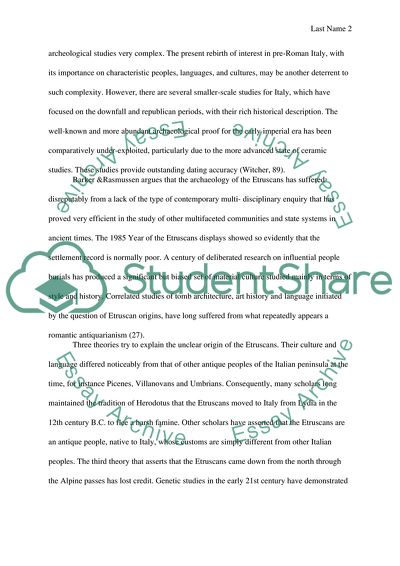Cite this document
(The Etruscan Civilization Research Paper Example | Topics and Well Written Essays - 5000 words, n.d.)
The Etruscan Civilization Research Paper Example | Topics and Well Written Essays - 5000 words. Retrieved from https://studentshare.org/history/1744822-the-etruscan-civilization
The Etruscan Civilization Research Paper Example | Topics and Well Written Essays - 5000 words. Retrieved from https://studentshare.org/history/1744822-the-etruscan-civilization
(The Etruscan Civilization Research Paper Example | Topics and Well Written Essays - 5000 Words)
The Etruscan Civilization Research Paper Example | Topics and Well Written Essays - 5000 Words. https://studentshare.org/history/1744822-the-etruscan-civilization.
The Etruscan Civilization Research Paper Example | Topics and Well Written Essays - 5000 Words. https://studentshare.org/history/1744822-the-etruscan-civilization.
“The Etruscan Civilization Research Paper Example | Topics and Well Written Essays - 5000 Words”, n.d. https://studentshare.org/history/1744822-the-etruscan-civilization.


